Sometimes you don't have a long enough piece of wood to make an Arkansas style toneboard, or you want to have a toneboard made of a certain type of wood while the exhaust end of the insert is made of a different type of wood. An easy solution is to use a tenon style joint to glue the toneboard into the exhaust end.
There are many different starting points to choose from, but for this example, I am starting with a pen blank for the toneboard piece, and an 1.5" square blank for the exhaust end.
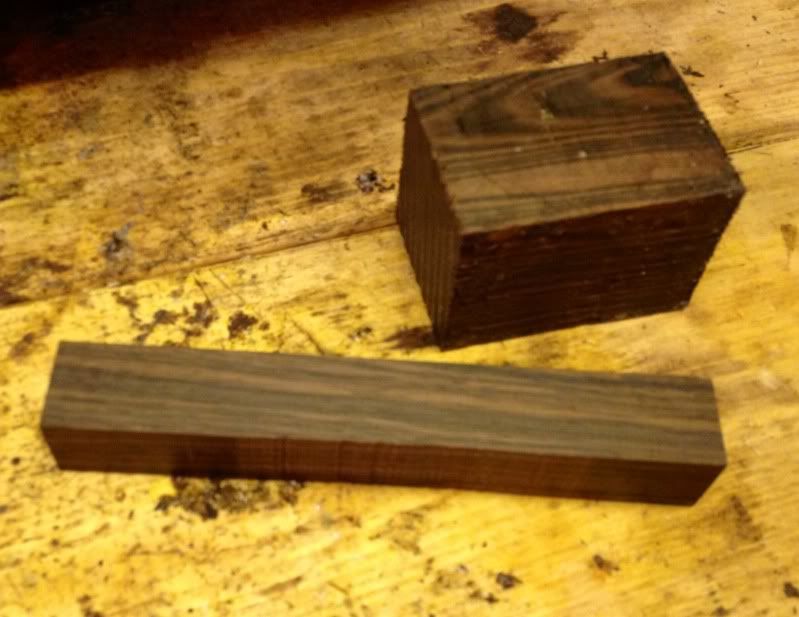
First thing that I do is take a 5/8" forstner bit, and drill a 1" deep hole into the block. This hole does not go all the way through, just part way.
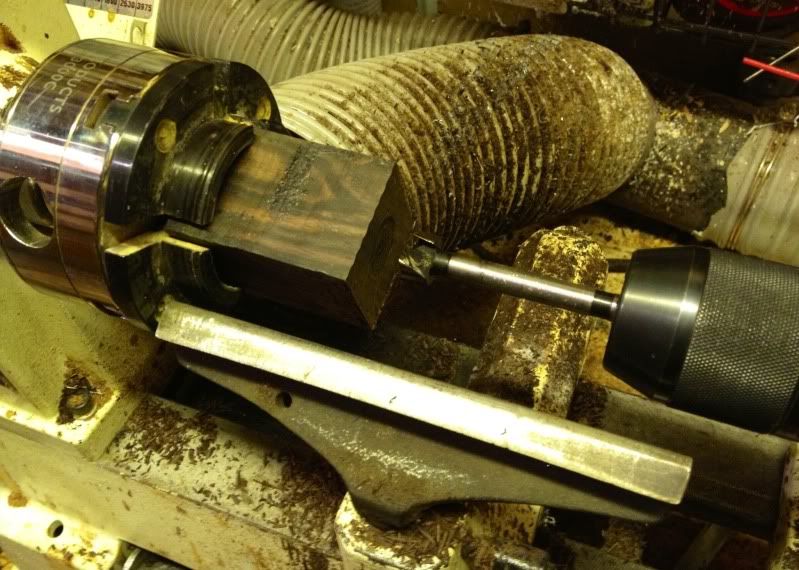
Next, I take the pen blank, and turn it round, to 5/8" diameter or slightly undersized to fit in your toneboard jig. I then cut the dowel to length, accounting for how much will be glued into the exhaust end and how much will be exposed to fit into the toneboard jig.
Then, I test fit the two pieces together. You want a fairly tight fit.
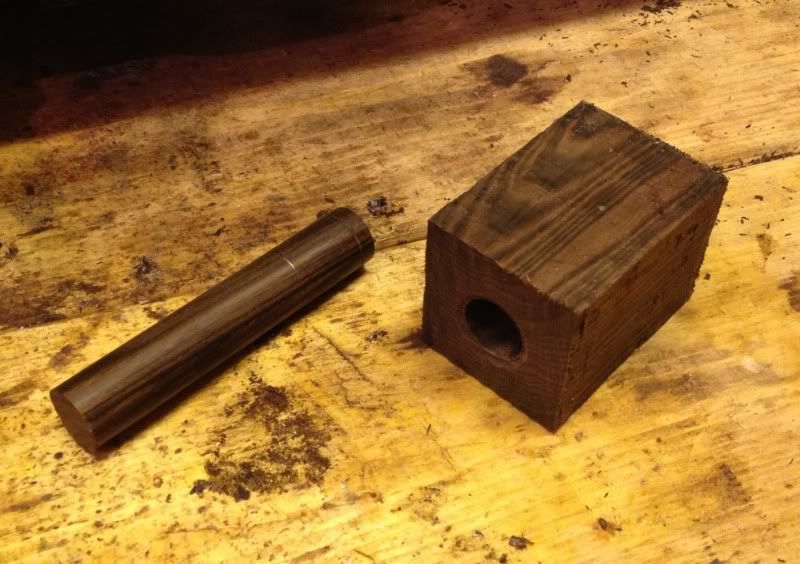
Next, you want to mark the top of the grain on both the exhaust end and the toneboard dowel. It makes a much better cosmetically looking end result when the grain aligns on both pieces. Also, make a pencil mark on the dowel to show when it is fully seated in the block.

Take the dowel and put it in your collet chuck, and tighten it down securely.
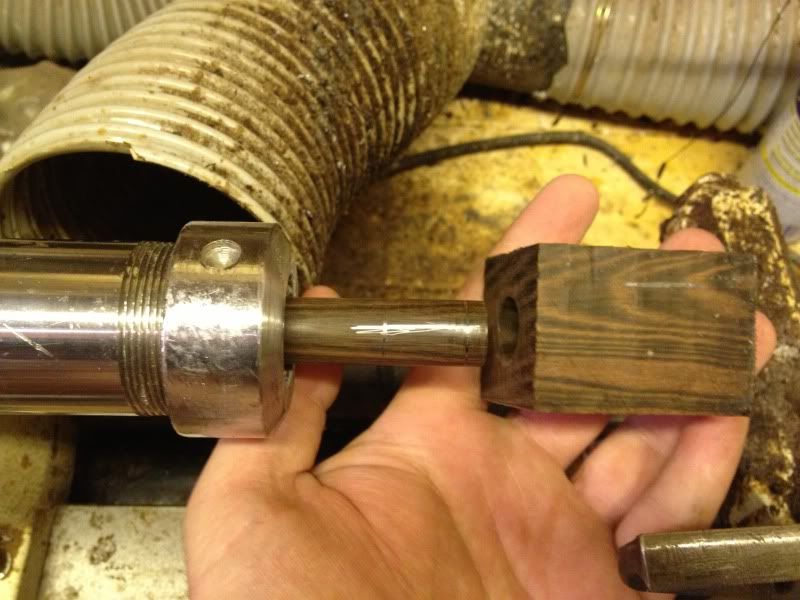
Put some glue in the blind hole in the block, and slide the block onto the dowel. Rotate the block around a couple times to make sure you get good glue coverage. Push the block onto the dowel as far as you can. Make sure to align the pencil marks when done.

The reason we marked the dowel earlier with the depth of how far it needed to be when fully seated can be seen above. When sliding on the block by hand, it feels like it is fully seated when it is not. Bring the tailstock up to the block, and use the tailstock leverage to slide the block the rest of the way until the block is fully seated. Some glue will spill out of the joint, and that is ok.
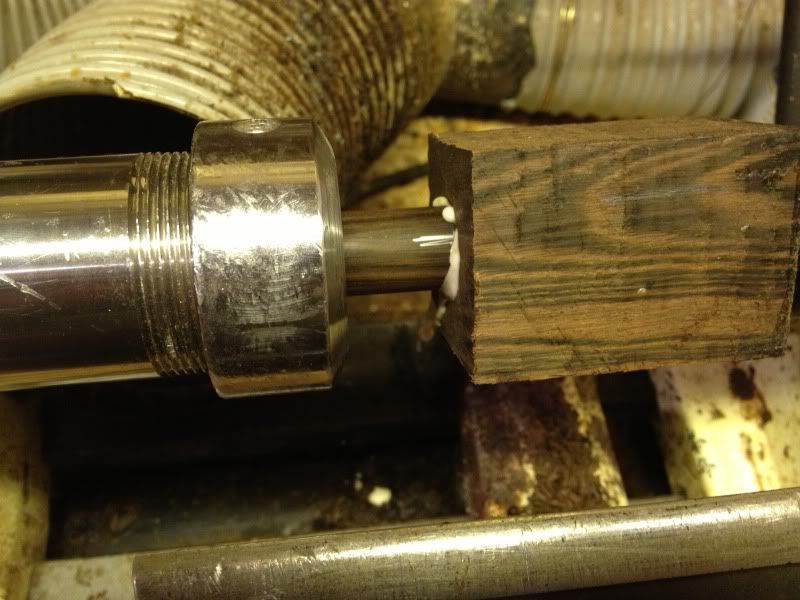
Let the glue cure for what the bottle recommends for drying time.
Then proceed to turn to shape, and finish as normal for a shouldered & o-ring style insert. If doing a friction fit insert, use a 1/2" diameter tenon into the exhaust block rather than 5/8".
Brian